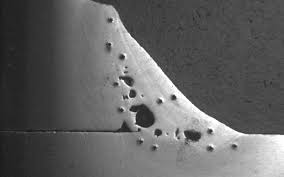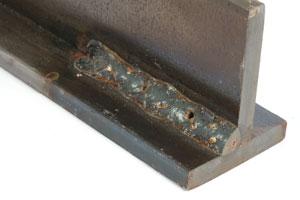What is Porosity in Welding: Key Factors and Their Impact on Weld Top Quality
The Science Behind Porosity: A Comprehensive Overview for Welders and Fabricators
Comprehending the intricate devices behind porosity in welding is important for welders and makers making every effort for flawless craftsmanship. As metalworkers explore the depths of this phenomenon, they reveal a world regulated by numerous factors that influence the development of these minuscule gaps within welds. From the composition of the base products to the details of the welding process itself, a wide variety of variables conspire to either aggravate or reduce the visibility of porosity. In this thorough overview, we will certainly unravel the science behind porosity, discovering its results on weld high quality and introduction advanced strategies for its control. Join us on this journey via the microcosm of welding imperfections, where accuracy meets understanding in the quest of perfect welds.
Recognizing Porosity in Welding
FIRST SENTENCE:
Exam of porosity in welding discloses critical understandings right into the stability and top quality of the weld joint. Porosity, identified by the visibility of dental caries or gaps within the weld steel, is a typical concern in welding processes. These voids, otherwise effectively attended to, can jeopardize the structural integrity and mechanical residential properties of the weld, causing potential failings in the ended up product.

To discover and quantify porosity, non-destructive testing approaches such as ultrasonic testing or X-ray inspection are often used. These strategies enable for the identification of interior defects without endangering the stability of the weld. By assessing the dimension, form, and distribution of porosity within a weld, welders can make informed choices to enhance their welding procedures and accomplish sounder weld joints.

Aspects Influencing Porosity Development
The incident of porosity in welding is influenced by a myriad of variables, varying from gas protecting effectiveness to the details of welding criterion setups. One vital element contributing to porosity development is inadequate gas protecting. When the shielding gas, typically argon or carbon dioxide, is not efficiently covering the weld pool, climatic gases like oxygen and nitrogen can infect the molten steel, bring about porosity. Furthermore, the cleanliness of the base products plays a significant duty. Impurities such as rust, oil, or dampness can evaporate throughout welding, creating gas pockets within the weld. Welding criteria, including voltage, present, take a trip rate, and electrode kind, likewise effect porosity formation. Utilizing improper setups can generate extreme spatter or heat input, which consequently can result in porosity. The welding method employed, such as gas steel arc welding (GMAW) or shielded steel arc welding (SMAW), can influence porosity formation due to variants in heat distribution and gas insurance coverage. Recognizing and controlling these variables are important for decreasing porosity in welding operations.
Impacts of Porosity on Weld High Quality
The existence of porosity additionally weakens the weld's resistance to corrosion, as the trapped air or gases within the spaces can What is Porosity respond with the surrounding atmosphere, leading to destruction over time. Furthermore, porosity can hinder the weld's capacity to withstand stress or influence, more jeopardizing the overall quality and dependability of the bonded framework. In vital applications such as aerospace, automotive, or structural constructions, where safety and sturdiness are extremely important, the detrimental results of porosity on weld top quality can have serious repercussions, emphasizing the significance of lessening porosity through proper welding strategies and procedures.
Methods to Reduce Porosity
To enhance the top quality of bonded joints and guarantee architectural honesty, welders and makers utilize particular methods aimed at lowering the formation of gaps and dental caries within the product during the welding procedure. One efficient method to reduce porosity is to guarantee correct product preparation. This includes comprehensive cleaning of the base metal to remove any kind of contaminants such as oil, grease, or moisture that can add to porosity development. Additionally, making use of the ideal welding parameters, such as the correct voltage, existing, and take a trip rate, is critical in avoiding porosity. Preserving a regular arc size and angle throughout welding likewise aids reduce the chance of porosity.

Utilizing the suitable welding technique, such as back-stepping or using from this source a weaving activity, can likewise assist distribute warm equally and lower the possibilities of porosity development. By applying these strategies, welders can successfully decrease porosity and generate high-grade welded joints.

Advanced Solutions for Porosity Control
Executing cutting-edge technologies and cutting-edge approaches plays a critical role in accomplishing premium control over porosity in welding processes. One sophisticated remedy is using advanced gas blends. Securing gases like helium or a mixture of argon and hydrogen can assist reduce porosity by providing much better arc security and boosted gas coverage. Additionally, employing innovative welding strategies such as pulsed MIG welding or changed environment welding can additionally help mitigate porosity issues.
Another innovative remedy involves the usage of sophisticated welding tools. Using equipment with integrated features like waveform control and advanced power resources can improve weld quality and lower porosity dangers. The application of automated welding systems with exact control over specifications can substantially reduce porosity problems.
Moreover, integrating sophisticated monitoring and evaluation technologies such as real-time X-ray imaging or automated ultrasonic testing can help in identifying porosity early in the welding procedure, allowing for instant corrective activities. Overall, incorporating these innovative remedies can greatly enhance porosity control and boost the total quality of welded parts.
Final Thought
Finally, understanding the scientific research behind porosity in welding is important for welders and makers to create top notch welds. By identifying the factors affecting porosity formation and applying methods to reduce it, welders can improve the overall weld quality. Advanced remedies for porosity control can better improve the welding process and guarantee a strong and reliable weld. this page It is very important for welders to continuously inform themselves on porosity and apply finest techniques to attain optimum outcomes.